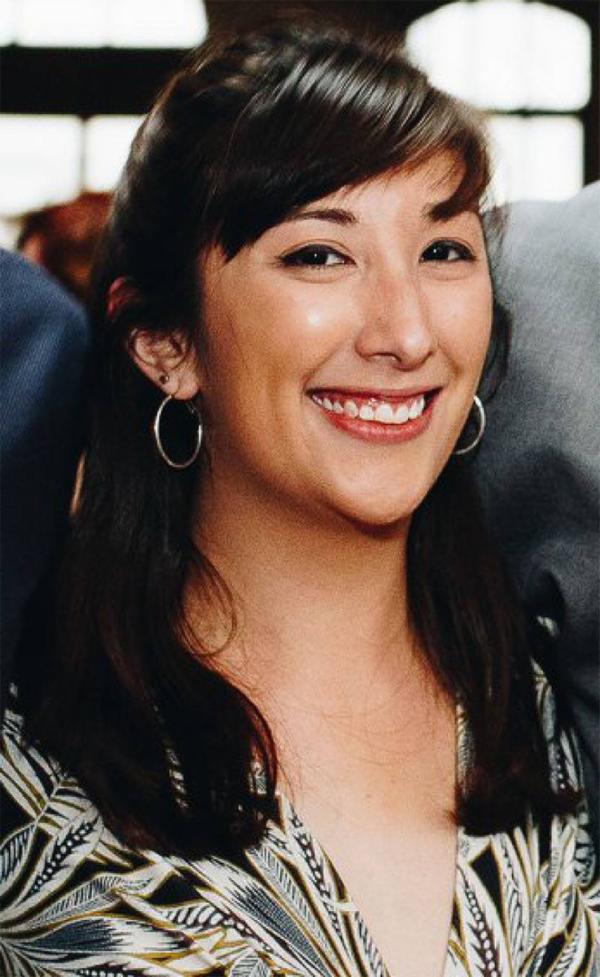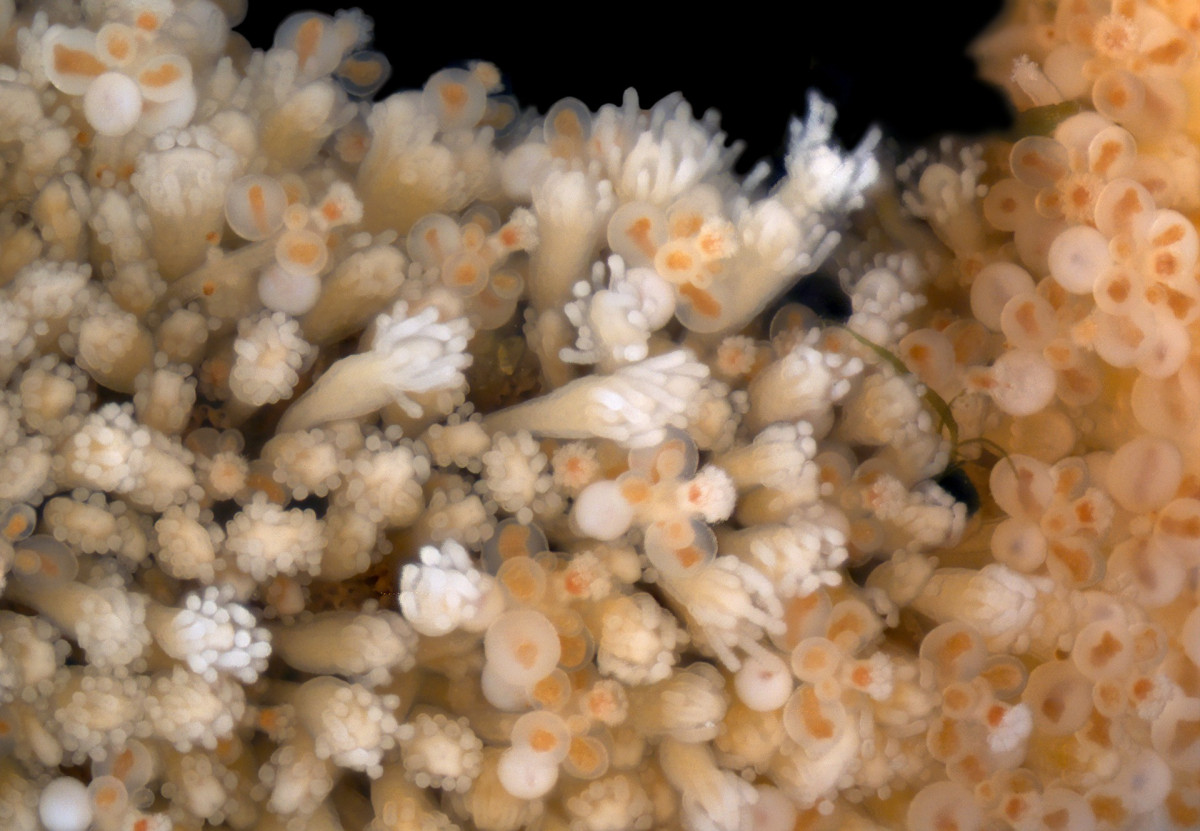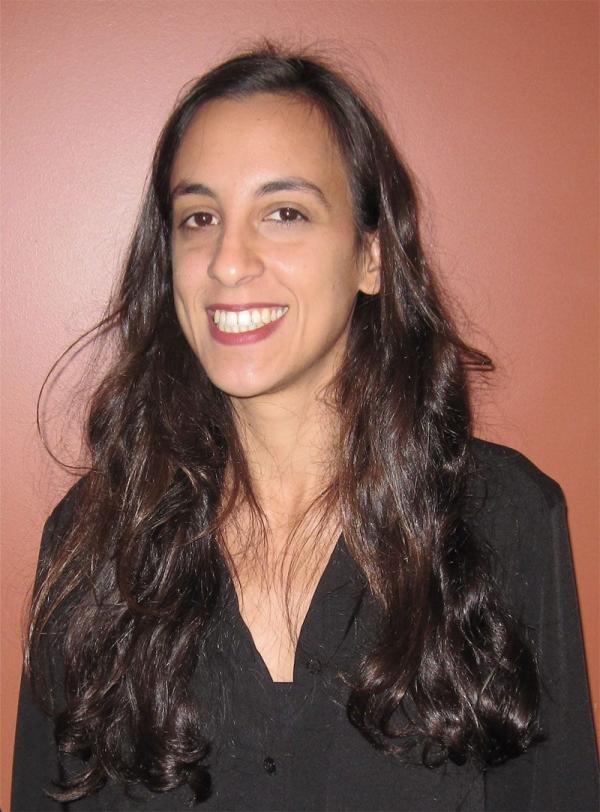Award Honors Promising Female Scientists
Women Scientists Advisors Select Three Young Researchers for Recognition
While women have now overtaken men in terms of admission and enrollment in undergraduate education, they remain underrepresented in the sciences. This includes at NIH, where 74 percent of senior investigators and 54 percent of tenure-track investigators are male, according to the most recent statistics available. Consequently, NIH is putting considerable effort into supporting women scientists at all stages of their careers.
One NIH entity dedicated to this important work is the NIH Women Scientists Advisors (WSA), a group of women elected to represent the interests of women scientists in the IRP. Among its many initiatives, each year the WSA chooses several female postdoctoral fellows or graduate students in the IRP to receive the WSA Scholar Award in recognition of their outstanding scientific achievements. The awardees present their research at the annual WSA Scholars Symposium, which this year was held on April 25 and recognized young women leading efforts to better understand how disease-related genes evolved, an investigation of how a fatty liver can give rise to liver cancer, and the evaluation of a way to deliver gene therapy for a rare genetic disease. Read on to learn more about this year’s WSA Scholars and the impressive discoveries they have made during their time in the IRP.
Sally Chang: A Deep Dive Into Jellyfish Genes

“As far as I can remember, I have been interested in the weird and wonderful creatures that inhabit our oceans,” says Sally Chang, Ph.D. While the many bizarre organisms that haunt the depths may appear to have nothing in common with us, scientists like Dr. Chang believe that learning more about their genomes could provide useful insights into how the human body works. She and her colleagues in the lab of IRP senior scientist Andy Baxevanis, Ph.D., are particularly focused on cnidarians, a group of aquatic animals that are defined by their use of stinging cells called cnidocytes to capture prey. Likely the most well-known cnidarian is the jellyfish, but there are many other members of the group as well.
“Cnidarians are one of our most distant animal relatives, but they actually share an ancestral ‘toolkit’ of crucial genetic pathways with humans, many of which are associated with human diseases,” Dr. Chang explains. “I am specifically trying to understand how these shared genetic pathways are utilized for the traits possessed by cnidarians that seem so distinct from human biology.”
Of course, before scientists can mine the genomes of cnidarians for valuable information, they must know the makeup of those organisms’ DNA. Consequently, Dr. Chang is working on developing high-quality genome sequences for several cnidarian species that have the potential to serve as useful animal models for studying certain biological processes, such as tissue regeneration, for which cnidarians have an impressive talent. In addition, she is searching for genes related to human diseases in a wide variety of organisms beyond cnidarians, from fungi to tiny worm-like species called planarians.
Already, Dr. Chang has discovered that disease-related genes tend to be evolutionarily older and present in more species than the average human gene. What’s more, she has found that genes related to certain types of ailments are evolutionarily older than others. For instance, many genes related to metabolic and nervous system diseases pre-date the moment in time when plants and animals split from each other on the evolutionary tree of life, while genes related to cardiovascular, immune system, and eye diseases appeared more recently.
“Many of these human-disease-associated genetic pathways are present in a very wide range of organisms,” Dr. Chang says. “This suggests that a wide range of perhaps surprising animals — even those very distantly related to humans — have the potential to provide valuable insight into the genetics of these diseases and traits.”
While much of her current research is exploratory, it has a very clear end goal: to identify organisms that can serve as useful models for studying specific systems or diseases found in humans. For example, despite having no bones, jellyfish actually possess genes related to those that drive bone growth and development in humans. What’s more, Dr. Chang’s studies have revealed that a cnidarian species called Hydractinia has more than 300 genes related to human disease-associated genes that are not found in fruit flies, one of the organisms most commonly used in biological research. This suggests that Hydractinia may actually be more useful for learning about certain human diseases than one of scientists’ favorite model organisms. In this way, as her research progresses, Dr. Chang hopes to develop and refine lists of organisms that might be useful for shedding light on particular scientific questions related to human health.
“If nothing else, this work will inspire researchers to look outside of the usual suspects for model organisms and encourage seemingly unexpected collaborations,” she says. “A larger ‘menu’ of genetic models and wider networks of collaboration can only be good for biomedical research! Each animal model provides unique potential benefits.”

Despite looking nothing like us, Hydractinia like this one may be extremely useful for learning how certain genes contribute to diseases found in humans.
Because her work requires sifting through enormous amounts of genetic data, Dr. Chang relies heavily on NIH’s Biowulf supercomputer for her research. However, the perks of working in the IRP don’t end there for her. Despite having to work largely remotely for much of her time at NIH so far, she has learned a lot from her mentor and others in her lab, as well as the many virtual trainings and seminars available to IRP researchers. It also doesn’t hurt that joining the IRP means she works just a few miles from where she grew up in Silver Spring, Maryland.
“I never expected to be living back in my ‘hometown’ of D.C., applying my knowledge of genomics and marine invertebrates to cutting-edge biomedical research!” she says. “I feel very privileged to work in an invigorating environment full of smart people where there is always something intellectually exciting going on.”
Ching Wen Chang: Looking Into Liver Cancer Genes

Ching Wen Chang, Ph.D., has spent the past four years exploring genetic contributions to liver cancer under the guidance of IRP senior investigator Xin Wei Wang, Ph.D. However, her interest in the disease long precedes her arrival in the United States from her native Taiwan. She attributes it in particular to her grandfather’s death from cancer when she was a child.
“All my family was so sad,” she recalls. “Since then, I've wanted to do something in cancer research.”
Dr. Chang’s work at NIH aims to unravel the mystery behind the ‘missing heritability’ of liver cancer, more formally known as hepatocellular carcinoma (HCC). Many cases of liver cancer are preceded by fat accumulation in the liver, a condition called non-alcoholic fatty liver disease (NAFLD). NAFLD can progress into liver inflammation — a state called non-alcoholic steatohepatitis (NASH) — before finally ending in liver cancer. However, not everyone with NAFLD develops NASH, and NASH does not always lead to liver cancer. Consequently, the relationship between the three liver ailments and the risk factors associated with their occurrence has been a draw for many curious scientists, including Dr. Chang.
“NASH is associated with obesity, metabolic syndrome, and high cholesterol,” she explains. “However, not all individuals with obesity and fatty liver develop NASH. In addition, individuals with normal weight could develop metabolic syndrome, which is a risk factor of NASH. NASH has long been recognized to have a heritable component, but known risk variants explain only a small fraction of heritability. The key question remains as to why only some individuals with NAFLD-related genetic variants will progress from fatty liver to NASH and then HCC.”
By looking at data from individuals with and without NASH who developed liver cancer, Dr. Chang identified a particular variant of the DNAJA3 gene that dramatically increases a person’s risk for NASH: compared to people with two copies of the less-risky variant, people with one copy of the risk-increasing variant have four times the odds of developing NASH, while people with two copies of the risk-increasing variant have six times the risk for NASH. Moreover, Dr. Chang found that the more copies of the risk-increasing variant people had, the less active the DNAJA3 gene was in their livers. This, in turn, leads to lower levels of the protein the gene produces, Hsp40, which is found specifically in cells’ energy-producing mitochondria. When Dr. Chang and her colleagues created mice who had no functional copies of the DNAJA3 gene in their liver cells, they found that the animals tended to develop NAFLD, NASH, and liver cancer, further confirming the gene and its associated protein as likely contributors to the three conditions.
“Defect of mitochondrial Hsp40 may be a good candidate for diagnostic and prognostic biomarkers, as well as treatment,” Dr. Chang says.
On the heels of those discoveries, Dr. Chang is now looking into the biological mechanism by which a lack of Hsp40 contributes to NASH and liver cancer. She is confident her continued work in the IRP will advance both our knowledge of liver cancer and her personal development as a scientist.
“I appreciate my mentor and NIH very much supporting me,” Dr. Chang says. “For example, my lab has many collaborative studies, and the collaborative studies are very fruitful, yielding many exciting and novel findings in liver cancer. Second, the NIH provided us very many resources, including courses on computational biology, speech, and writing. It's taught me a lot.”
Shachar Abudi: Developing Gene Therapy for a Rare Disease

Growing up in Israel, Shachar Abudi spent practically her entire childhood dreaming of becoming a doctor. In fact, she was so enthusiastic about the prospect that she began medical school at Tel Aviv University when she was only 21 years old, several years earlier than most of her Israeli peers.
“I believed that it is the ideal job that affects people's lives, and I wanted to have the strength to help people,” she explains. “I still believe that a physician is the best job in the world — spending time at hospitals and seeing people’s smiles when they feel better is the most satisfying feeling. I also always loved genetics. In middle school, I took a genetics class and we learned about Dolly the cloned sheep; I found it so fascinating that humankind can do that and I was drawn to it.”
During medical school, Shachar decided to apply to an M.D./Ph.D. program, which led her to working in the lab of Yair Anikster, M.D., Ph.D., Director of the Pediatric Metabolic Disease Unit at Sheba Medical Center, Israel’s largest hospital. Dr. Anikster introduced his new mentee to his long-time research collaborator, IRP senior investigator Willam Gahl, M.D., Ph.D., who told her about his lab’s gene therapy research. She subsequently ended up spending three years in Dr. Gahl’s NIH lab helping with his team’s efforts to develop a gene therapy for Hermansky-Pudlak syndrome (HPS), a rare genetic disease that affects pigment in the hair, skin, and eyes. More importantly, it leaves patients prone to excessive bleeding and a potentially fatal lung disease called HPS-associated pulmonary fibrosis.
“Unfortunately, there is no known treatment for these patients, and unless they have lung transplantation, they will die at a relatively young age,” Shachar explains. “The availability of organs is limited, and people can die while waiting for lung transplantation. Moreover, even if one were able to receive a transplanted lung, it can be rejected by the recipient. We are studying gene therapy using different approaches and tools, hoping to either correct the mutation in the DNA or deliver a normal copy of the gene that will be expressed in addition to the mutant one; this could reverse or prevent the lung disease. The importance of this kind of approach is enormous and it would be life-saving if it works.”

In addition to a lack of skin pigmentation, patients with HPS are also prone to excessive bleeding and a dangerous lung ailment.
Working closely with IRP staff scientist May Malicdan, M.D., Ph.D., Shachar has aided Dr. Gahl’s and Dr. Anikster’s efforts by helping to create mouse models with the same genetic change that causes HPS in humans. These mice, whose mutations inactivate the HPS1 gene, have similar pigment abnormalities to those of human patients, and they also have particular lung cells that are enlarged and stuffed with fatty molecules called lipids, giving them a ‘foamy’ appearance, just like their human counterparts.
During her time in Dr. Gahl’s lab, Shachar also conducted a study of two different viruses that could one day potentially be used to introduce a functional copy of the HPS1 gene into patients’ cells, since viruses are naturally adept at injecting their own genetic material into cells in order to reproduce. When she used the viruses to introduce a functional copy of the HPS1 gene into the cells of mice with HPS1 mutations, she found that the gene was active in the animals’ lungs. What’s more, the experimental gene therapy also succeeded at reducing the size of the enlarged, abnormal cells in the animals’ lungs to a point where they were not significantly different from those of genetically normal mice.
“It is important to say that these results are still preliminary, and more validation is needed,” Shachar cautions, “but the implication of this work, if confirmed, is that people's lives could be saved by this gene therapy. We are optimizing our delivery strategies and are starting to use the human gene sequence instead of the mouse one, hoping that one day soon, we will be able to treat human patients.”
Shachar is now back home in Israel doing clinical rotations for medical school while also writing up the results of her Ph.D. research in Dr. Gahl’s lab. In fact, her first scientific paper based on those studies was published just a few weeks ago. Looking farther into the future, Shachar hopes to one day return to NIH, perhaps as a postdoctoral fellow or to complete her medical residency. In the meantime, she has extremely fond memories of her time in Dr. Gahl’s lab to tide her over.
“I enjoyed every little thing there,” she says. “For me, the whole experience was extreme. I left my home country by myself and I had to build my home away from home. I learned English and research and how to live in the U.S. What the people are like, the culture, holidays, and even simple things like the Metro — everything was new to me. I learned so much in such a short period of time. I made new friends and found the people who made me feel at home even when I am thousands of miles away. I learned how to do research and how to lead my own project and even our gene therapy group. I used the most advanced technology, had endless opportunities to study and participate in different projects, conferences, and competitions, to present my work, and meet the smartest people. I love and adore each and every one of them. I had the best mentors and lab members; everyone was willing to help anytime, and, truly, every piece of me is wishing to have more time at the NIH and see our research translate into the clinic and help human HPS patients.”
Subscribe to our weekly newsletter to stay up-to-date on the latest breakthroughs in the NIH Intramural Research Program.
Related Blog Posts
This page was last updated on Monday, January 29, 2024
